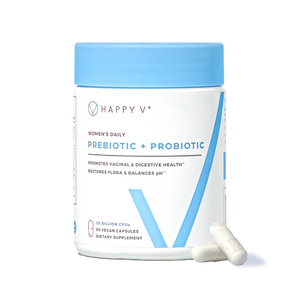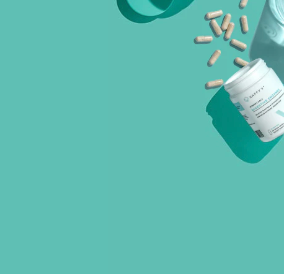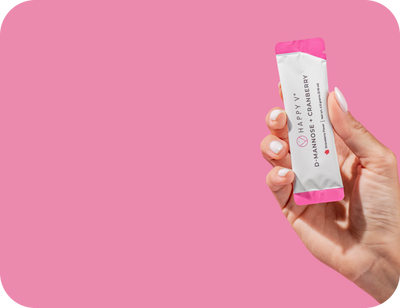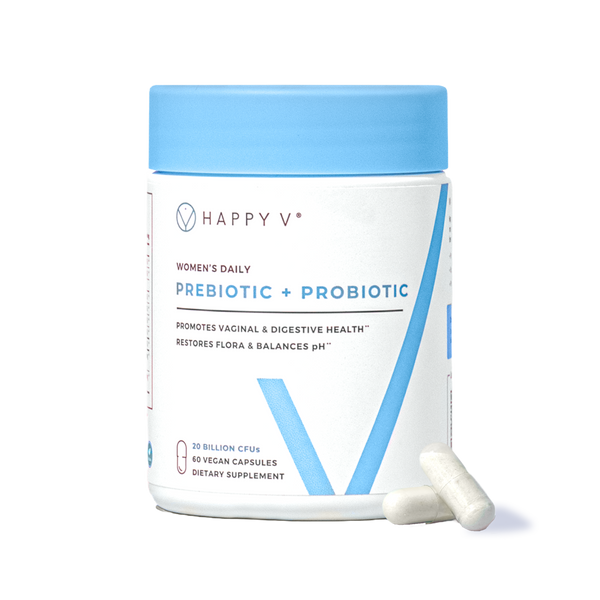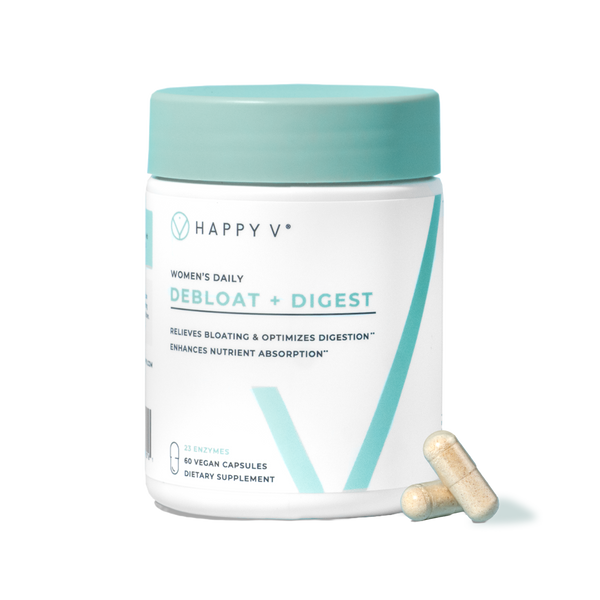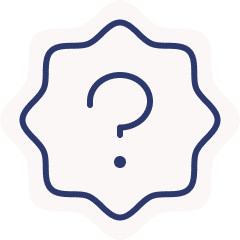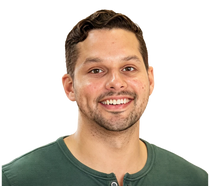- Fact Checked
- September 12, 2025
- 7 min read
Can Condoms Cause Yeast Infections?
Table of Contents
Table of Contents
Few things are more frustrating than taking all the right steps to protect your sexual health, only to end up with an itchy, irritating yeast infection. If it feels like you get an infection every time you use a condom, you might be wondering if the condom is to blame.
The truth is that condoms don’t directly cause yeast infections, but certain ingredients, materials, and other factors related to sex can make the vaginal environment more hospitable to yeast overgrowth1.
In this post, we’ll explore the link between condoms and yeast infections, what to watch out for, and how to keep your vaginal flora happy, balanced, and resilient.
This post is for informational purposes only and does not constitute medical advice. See full disclaimer below.
What is a Yeast Infection?
A vaginal yeast infection (sometimes referred to as vulvovaginal candidiasis) happens when there’s an overgrowth of Candida in the vaginal flora2. Candida is a type of fungus that naturally lives in small amounts in the vagina3, but when something disrupts the vaginal microbiome, Candida can multiply and cause uncomfortable symptoms.
Common Symptoms of a Yeast Infection:
In as many as 50% of cases, yeast infections are symptomatic, meaning they don’t have any symptoms. However, those that are caused by the strain of Candida called candida albicans often do have symptoms, which include:
- Itching or burning in the vulva or vaginal area4
- Thick, white discharge (often described as “cottage cheese”-like)
- Redness or irritation around the vulva5
- Pain during urination or sex6
The Link Between Sex and Yeast Infections
Yeast infections aren’t classified as sexually transmitted infections (STIs), but sex can still be a trigger, especially when combined with other risk factors (which we’ll get into later).
That’s because intercourse, whether vaginal, oral, or with toys, can disrupt the delicate balance of bacteria and yeast that make up your vaginal microbiome.
Here's how sexual activity can set the stage for a yeast infection:
- It causes friction. The friction involved in penetrative sex can cause microtears or just generally irritate the vulva and vaginal walls, making it easier for Candida to take hold7.
- It can shift pH. Semen and saliva are naturally alkaline, which can temporarily shift your acidic vaginal pH. Since Candida thrives in a less acidic environment, this shift can promote overgrowth8.
- It can involve condoms and lubricants. And these can contain ingredients like glycerin, flavors, or spermicides may feed Candida or irritate the vaginal lining9.
- It can include oral sex. Candida exists in the mouth, too. Though rare, it's possible for oral sex to introduce additional yeast to the vaginal area, especially if your partner has oral thrush (aka a yeast infection in the mouth)10.
- It can involve sex toys. If not properly cleaned between uses (or between partners), sex toys can harbor bacteria and yeast, contributing to reinfection.
Can Condoms Actually Cause Yeast Infections?
Well, no. And also... yes. No, condoms don't cause yeast infections directly. But they can contribute to them in a few different ways. Here's how:
1. Latex Sensitivity or Allergy
Some people are allergic to latex, the material found in many condoms. This can lead to irritation or inflammation in the vulva and vagina, weakening your natural defenses and making it easier for Candida to overgrow.
If you suspect a latex allergy or sensitivity, look for non-latex condoms made from polyurethane or polyisoprene.
2. Lubricants and Additives
Certain condoms come pre-lubricated with spermicides, glycerin, or flavored lube11. While these may enhance pleasure or offer extra protection, they can also disrupt your vaginal pH or cause irritation. Glycerin, in particular, is a type of sugar that can feed Candida.
To lower your risk, choose condoms with water-based, fragrance-free lubricants and skip spermicide unless medically necessary12.
3. Disruption of the Vaginal Microbiome
Frequent sexual activity—even with condom use—can alter the vaginal microbiome13, especially when combined with hormonal fluctuations, birth control, or douching. These shifts may reduce the amount of protective lactobacilli (aka the good bacteria that keep yeast in check).
Other Factors That Can Contribute
While condoms can play a role in recurring yeast infections, they’re rarely the sole cause. Other common yeast infection triggers include:
- Antibiotics
- Hormonal changes (pregnancy, menstruation, menopause)
- High blood sugar levels
- Tight clothing or synthetic underwear
- Weak immune system
When you understand all the risk factors at play, you can take steps to protect yourself against future symptoms.
How to Prevent Yeast Infections from Sex
The good news is that even if sex is contributing to your yeast infections, you don't have to give up sex to prevent them from happening. Often, lifestyle changes are enough to break the cycle. Here are a few things to focus on:
-
Switch your condoms. If you're sensitive to latex or additives, try non-latex condoms made from polyisoprene or polyurethane. Avoid options that include glycerin or flavoring, since these can disrupt pH.
-
Use clean lube. Opt for simple, water-based lubricants that are free from sugars, fragrances, and glycerin that can actually feed Candida.
-
Skip the spermicide. While spermicide can be effective for pregnancy prevention, many formulas can irritate vaginal tissue and harm good bacteria14.
-
Keep things dry. Moisture is yeast's best friend. After sex, change out of damp underwear, avoid tight-fitting clothes, and consider sleeping without underwear to let things breathe15.
-
Avoid douching. Your vagina is self-cleaning, so douching isn't actually necessary. More than that, it can wash away good, infection-fighting bacteria, leaving you more prone to infection16.
-
Skip scented scrubs. These contain chemicals that can disrupt your vaginal flora. Only wash using warm water and mild, unscented soap.
- Taking targeted probiotics. Probiotic supplements designed specifically for vaginal health can help maintain a balanced pH and encourage the growth of good bacteria, essentially boosting your body's immunity against infection-causing bacteria.17
Happy V's doctor-formulated probiotic features clinically studied strains like Lactobacillus acidophilus and L. rhamnosus, known for promoting a resilient vaginal environment. Preclinical data also shows Happy V's formula helps reduce levels of Candida albicans, the most common cause of yeast infections.
Prebiotic + Probiotic
Maintains vaginal pH and restores gut health.
Treatment Options
If you do develop a vaginal yeast infection, don’t worry. It’s as treatable as it is common. Go see your doctor to confirm diagnosis and come up with a treatment plan, which may include:
-
Over-the-counter treatments. These are generally antifungals like clotrimazole or miconazole18.
-
Prescription options. For stubborn or recurring cases, your provider might prescribe oral antifungal medication like fluconazole.
- Daily probiotics. Like we said, quality probiotics like Happy V can help rebalance your microbiome and prevent future infections. These are meant to be taken alongside OTC or prescription treatments, not in place of them!
If symptoms persist or get worse, even after treatment, make another appointment with your doctor. It's possible you may have been misdiagnosed, as other common infections like bacterial vaginosis and trichomoniasis share symptoms with a yeast infection but require different treatment to resolve.
Final Thoughts
Using condoms doesn’t directly cause yeast infections, but certain materials, additives, and sensitivities can make the vaginal environment more vulnerable to Candida overgrowth. That doesn’t mean ditching condoms (in fact, your condom is protecting you from more problems than it’s causing!). It just means being a little more thoughtful about what goes into your sexual health routine.
Remember: maintaining a healthy vagina means supporting your body’s natural balance. With the right condoms, smart hygiene practices, and a little help from probiotics, you can stay protected and feel your best.
Keep the Conversation Going
-
Visit our blog for more on yeast infections and women’s health tips.
-
Join our private Happy V Facebook group to hear from others who’ve been there.
- Explore supplements designed to support your vaginal health journey.
Disclaimer: This blog is for informational and educational purposes only and is not intended to diagnose, treat, cure, or prevent any disease. Statements about supplements have not been evaluated by the Food and Drug Administration. For more information about vaginal infections, visit the CDC or speak to a licensed healthcare provider.
